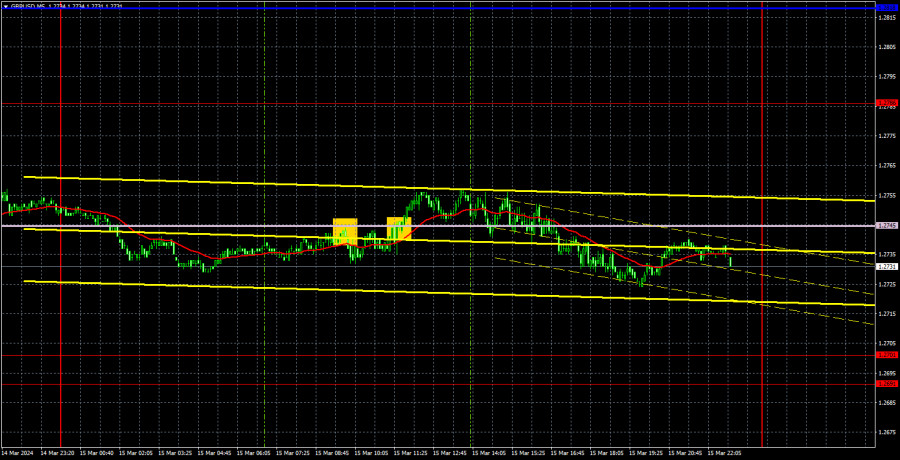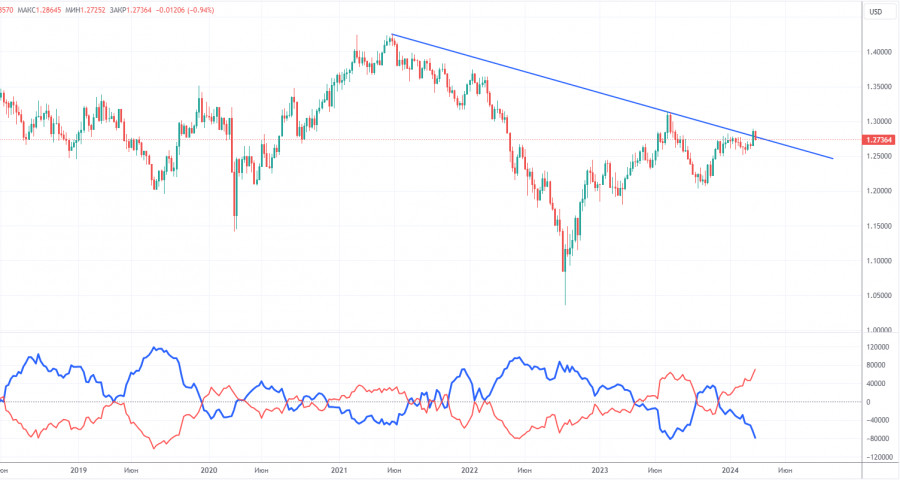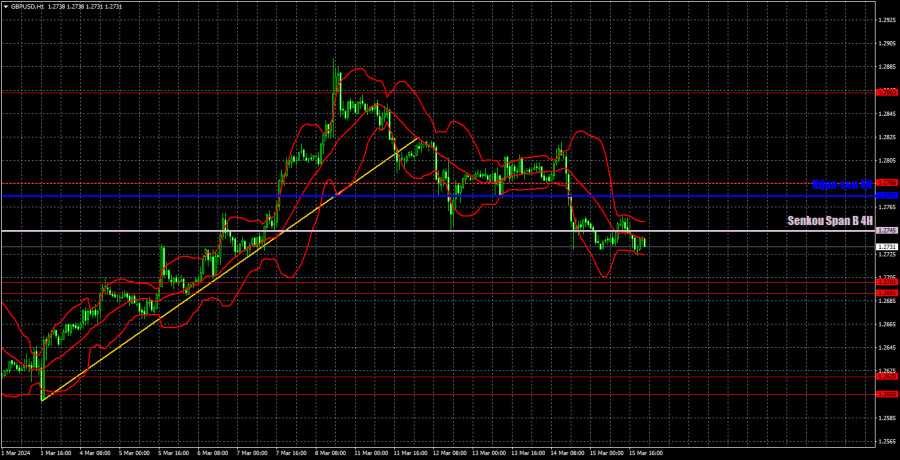Analysis of GBP/USD 5M
GBP/USD did not show any interesting movements on Friday. We observed low-volatility flat trading, and even US reports on industrial production and consumer sentiment could not encourage market participants to become more active. Nevertheless, the downtrend persists, and we really want to believe that this time it will not end in a blink of an eye. However, this is precisely where the big concerns lie.
This week, traders are looking forward to the two central bank meetings: the Federal Reserve and the Bank of England. Considering the fact that the market continues to interpret most of the incoming information in favor of the British pound, there's a chance that this time it will see hawkish signals in the BoE meeting and dovish signals in the Fed meeting. If this is the case, then there will be no questions. However, the past six months have shown us that it often happens the other way around.
Currently, the price is below the Ichimoku indicator lines, but the bears' advantage is so fragile that it can disappear quickly and easily. We need to make sure that the market has completely abandoned groundless purchases of the pound, and only then can we talk about forming a steady downtrend.
Several trading signals were formed on Friday, but due to weak volatility, there was no point in considering them. Unfortunately, it is difficult to predict a flat. Especially on an intraday basis. However, it became clear a few hours after the opening of the European session that we would not see strong movements. The US session couldn't even rectify the situation, which usually experiences more active trading.
COT report:
COT reports on the British pound show that the sentiment of commercial traders has frequently changed in recent months. The red and blue lines, which represent the net positions of commercial and non-commercial traders, constantly intersect and, in most cases, remain close to the zero mark. According to the latest report on the British pound, the non-commercial group opened 21,000 buy contracts and 8,900 short ones. As a result, the net position of non-commercial traders increased by 12,100 contracts in a week. Despite the fact that the net position of speculators is growing, the fundamental background still does not provide a basis for long-term purchases of the pound sterling.
The non-commercial group currently has a total of 112,300 buy contracts and 52,800 sell contracts. The bulls have a big advantage. However, in recent months, we have repeatedly encountered the same situation: the net position either increases or decreases, and the bulls or the bears either have the advantage. Since the COT reports do not provide an accurate forecast of the market's behavior at the moment, we have to scrutinize the technical picture and economic reports. The technical analysis suggests that there's a possibility that the pound could show a pronounced downward movement (descending trend line), but there is currently no sell signal on the higher time frames.
Analysis of GBP/USD 1H
On the 1H chart, GBP/USD is attempting to form a new downtrend. The economic reports and the fundamental background do not support the British pound, but we have already seen something similar in the second half of 2023. Back then, the pound also rose for no apparent reasons. If the price consolidates below the trendline and the Ichimoku indicator lines, we can hope that the pair may start a small downward movement, but this could quickly end if the market interprets the UK inflation data and the outcomes of the BoE and the Fed meetings in favor of the pound.
As of March 18, we highlight the following important levels: 1.2215, 1.2269, 1.2349, 1.2429-1.2445, 1.2516, 1.2605-1.2620, 1.2691, 1.2786, 1.2863, 1.2981-1.2987. The Senkou Span B line (1.2745) and the Kijun-sen line (1.2775) can also serve as sources of signals. Don't forget to set a Stop Loss to breakeven if the price has moved in the intended direction by 20 pips. The Ichimoku indicator lines may move during the day, so this should be taken into account when determining trading signals.
There are no significant events lined up in the UK and the US. Therefore, we expect either a new flat or a weak downward movement. Selling is currently more relevant, but it is not advisable to count on a sharp decline in the pair. Tuesday and Wednesday will largely depend on the market's expectations regarding the outcomes of the Fed and BoE meetings.
Description of the chart:
Support and resistance levels are thick red lines near which the trend may end. They do not provide trading signals;
The Kijun-sen and Senkou Span B lines are the lines of the Ichimoku indicator, plotted to the 1H timeframe from the 4H one. They provide trading signals;
Extreme levels are thin red lines from which the price bounced earlier. They provide trading signals;
Yellow lines are trend lines, trend channels, and any other technical patterns;
Indicator 1 on the COT charts is the net position size for each category of traders;
Indicator 2 on the COT charts is the net position size for the Non-commercial group.












